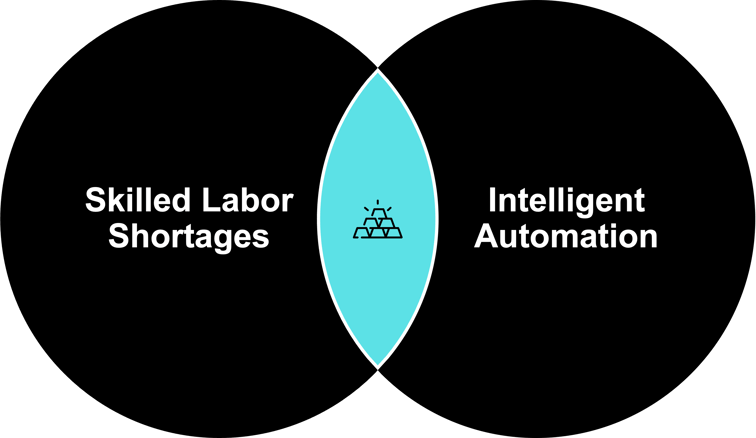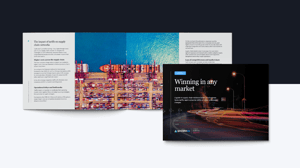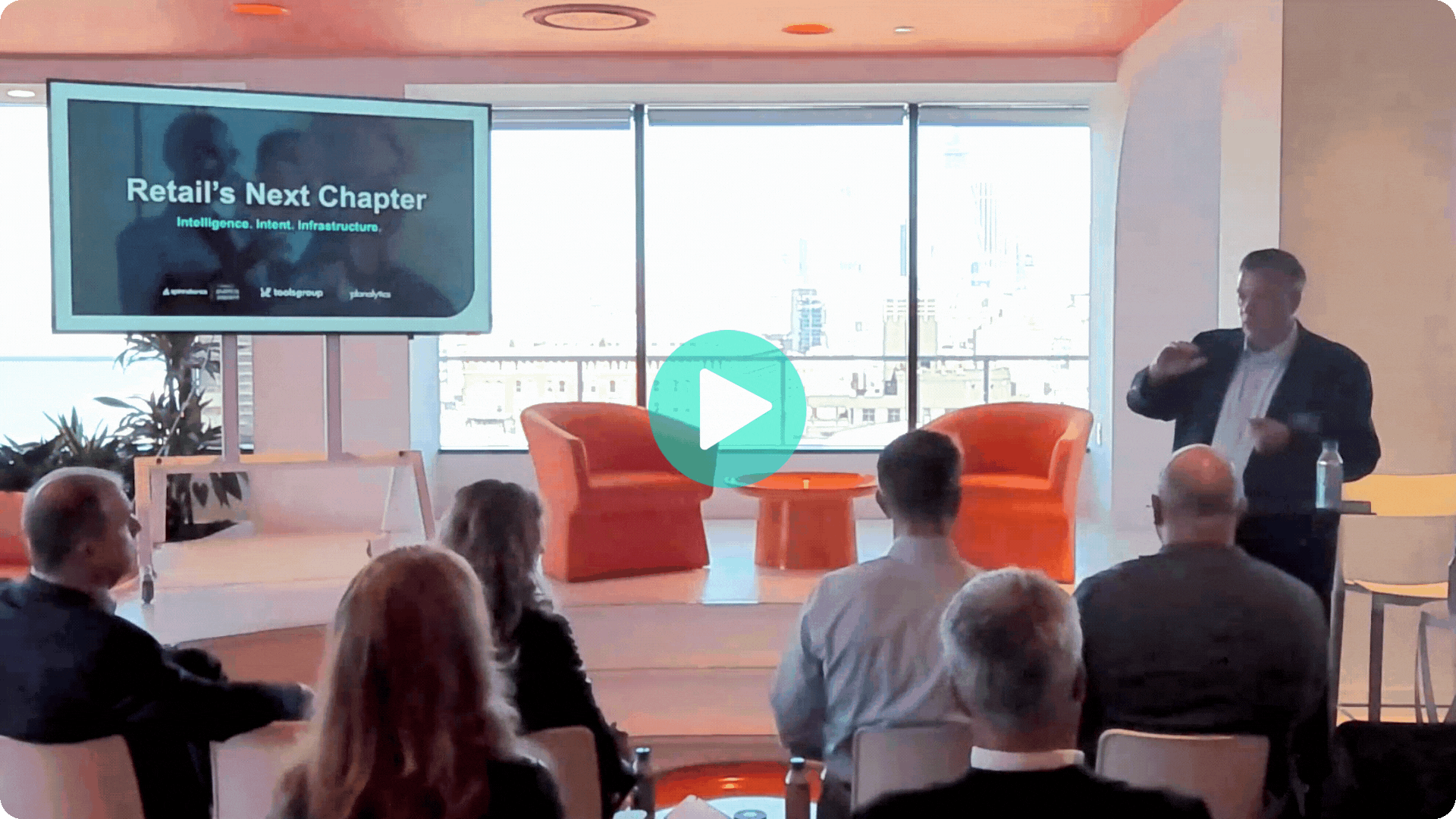I still remember the spring of 2020 when very smart people swore retail stores were finished. Then we all went back.
Turns out we want to pick out our own produce after all. And that's retail in one sentence: We tend to over-predict, under-prepare and the customer keeps us humble.
After 35+ years in this business, I’m convinced: This isn’t another season or cycle in the retail landscape—it’s a reset. And the difference isn’t the hype of AI. It’s a shift in the foundation. The retail and supply chain leaders I work with are finally connecting planning to performance so tightly that the promise made to a customer is the promise kept.
Let’s take a closer look at the five trends that I presented to retail leaders earlier this month at Modernizing Retail. These themes are a good place to start to stay relevant—and profitable.
Prefer to watch? Head over to Spinnaker SCA's YouTube channel to watch the on-demand version.
1. Accelerated personalization through AI
A few months ago, my daughter and I walked into a Coach store. She’d been stalking a Tabby bag online. The day finally came. There it was—in her color, at her (father’s) price, and in stock. That moment felt “personal” to her because Tapestry had planned it right.
We often forget this: Personalization starts with demand forecasting and inventory management, not the ad server.
If you buy three containers too many of the wrong thing—or three too few of the right thing—no algorithm can rescue the experience.
The retailers that are pulling ahead aren’t guessing faster; they’re sensing better. They’re letting AI assist the forecast, using live signals beyond last year’s POS, and placing inventory at the SKU × location × week level so the basics actually happen: Right product, right place, right time, right price.
After all, you can’t personalize what you don’t have. Personalization isn’t a marketing problem. It’s an inventory truth problem that AI can finally help us solve—if our data is ready and our teams trust in it.
2. Dynamic, autonomous buying journeys
AI agents are becoming a sales channel—so your brand must be machine-readable. Many shoppers (especially Gen Z and Gen Alpha) don’t start with a search bar anymore. They ask an AI assistant. This shift is already trickling into the numbers. What matters is whether your brand will survive this translation layer.
I’ve watched a national sporting goods client win (quietly) by treating AI assistants like real customers: Clean product data, standard attributes, reliable availability and delivery windows. When an AI shopper asks for “a youth baseball glove under $80 that arrives by Saturday,” the assistant can actually vouch for the promise—and the in-store aisle tells the same story when the kid tries it on.
And about stores: “Immersive” doesn’t mean a DJ and confetti. It means your power tool aisle feels like the power tool capital of the world. Your handbag wall feels like the brand. VR and AR will matter as it becomes invisible—glasses, phones, earbuds—not helmets.
So you have to ask yourself: When it’s machine talking to machine, how does your brand still stand out? Consistency and differentiation is the new performance marketing.
3. Disruption as the default
We’ve all lived the hits: Factory fires, tsunamis, Suez sideways, port strikes, cyberattacks, tariff roulette. Years ago, we diversified suppliers like a spider web and called it “flexible.” The hard lesson we learned is that it just made each strand in the supply chain more vulnerable.
Way back in the day, when I worked with Pottery Barn, we once wrote holiday POs so everything landed on July 31. The Memphis DC politely informed us there weren’t enough trailers in the city to move that much freight all in one day.
That’s what planning in a tower gets you. Resilience is designed, not declared.
The fix then is to make the enterprise behave like an organism: Planning, allocation, transportation, and labor moving together—so when there’s a disruption, you re-place inventory, re-sequence labor, or re-price products within hours, not quarters.
Flexible beats fragile every time. But flexible only works if it’s connected.
4. The great labor reallocation
If you ever drive around Evansville, Indiana, you’ll notice it’s a forest of DCs. Operators there will tell you: “When we need to hire, we look to the left and right.” Even in a cooler labor economy—when population isn’t on the decline—it’s common to have a skilled labor shortage.
That’s why the next wave of automation can’t just be more robots; it must be cognitive. AI copilots that can chew through exceptions, draft buys, and orchestrate work across WMS, TMS, labor and planning systems.
We can’t hire our way out. We must augment our way through.

Figure 1. An opportunity exists between the convergence of skilled labor shortages
and the rise of intelligent and AI-enabled automation.
For a large apparel program last year, we stopped asking planners to be spreadsheet sheriffs. An AI copilot produced the first draft of routine decisions and then humans edited and owned the calls that actually moved the P&L. The energy changed. And so did the outcomes: Fewer scrambles, steadier service, and higher employee satisfaction and retention because the job got way more interesting.
Human-led, AI-assisted—that’s the operating model. People are the point. AI just lets people do more meaningful work.
5. The Trust Imperative: Lead with transparency
If you caught the recent 60 Minutes segment on supply chain, you may have seen how 24,000 bottles of tequila vanished via spoofed GPS and double-brokering. Two loads worth millions gone. Unfortunately, this scenario is more common you than think.
Trust has two audiences. Inside: Retailers and supply chain operators need to know where goods originate, who has them, and when they’ll arrive—without fairytale ETAs. Outside: Customers who want the same truth in plain language. “It’s coming Tuesday. Weather has caused some delays, but here’s the new ETA.” Specificity beats spin every time.
If customers can’t trust your supply chain, they can’t trust your brand. Transparency isn’t a dashboard. It’s a promise you can keep—and explain.
Looking ahead at 2026
Next year won’t be won by whoever digitizes fastest. It’ll be won by whoever differentiates at scale—getting the basics right everywhere, every day, and using AI to make that reliability feel personal.
If there’s one headline for 2026, it’s this: Ask the customer first. Everything above—AI, resilience, automation, transparency—is in service of delivering what the customer actually values. (Not what you think they value.)
We’ve been saying “customer-centric” for decades. The difference now is that the tooling exists to connect planning to performance in near real time. Use it.
Ask your team these three things every week: What promise did we make? Can we keep it? What did we learn—fast enough to matter? Do that, and you don’t have to predict the future. You’ll help write it.
P.S. Missed my Modernizing Retail session? The full talk and Q&A—plus examples of agent-led shopping already in the wild—are available on-demand here.





